AT&T MiFi Liberate 4G LTE Mobile Wi-Fi Hotspot Review
AT&T Liberate 4G LTE Hotspot
AT&T has had 4G LTE mobile hotspots for over a year and they have allowed travelers around the word to access the internet with ease when on the go. You wouldn’t expect a ton of innovation for just a simple product, but the AT&T MiFi Liberate proves that is not the case. This new 4G LTE mobile hotspot has a full-color touchscreen, microSD card storage slot, GPS and DLNA connectivity! This is not your typical mobile hotspot and it is easy to note that Novatel Wireless, the creator of the MiFi Liberate, designed this to be the most advanced hotspot on the market today. Then again that doesn’t take too much as AT&T offers just two hotspots right now; the Elevate for $0.99 with a contract ($150 without) and the Liberate for $49.99 with a 2-year contract ($200 without).
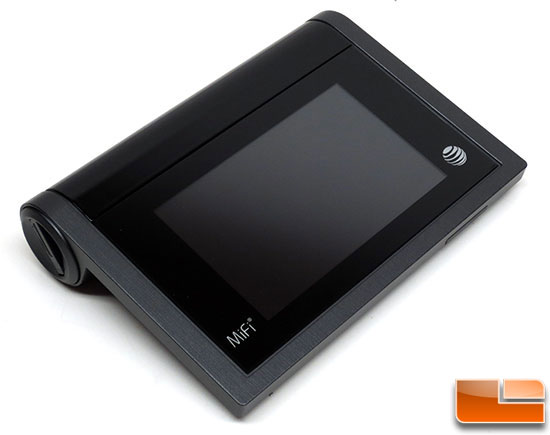
The AT&T MiFI Liberate (AT&T Product Page) measures in at 99.5 x 73.1 x 8.8mm and weighs at 120 grams, so it is larger than past hotspots that we have used, but it is has a fairly modern appearance that makes up for its size. From the looks of the Liberate it looks like a design team was used to make this device stylish, which hasn’t been done to this point before. The glossy black exterior with textures gray edges is sharp.
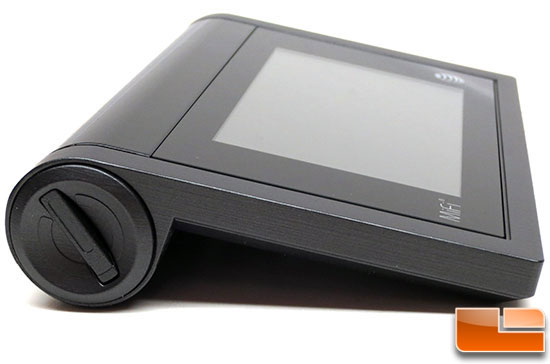
Looking down the left side Liberate you’ll see that the model has a large cylinder for the batter on the backside and then has a front panel coming down at an angle for visibility. The power button is located at the end of the cylinder in a small indented area. It blends in nicely and is aesthetically pleasing and functional.
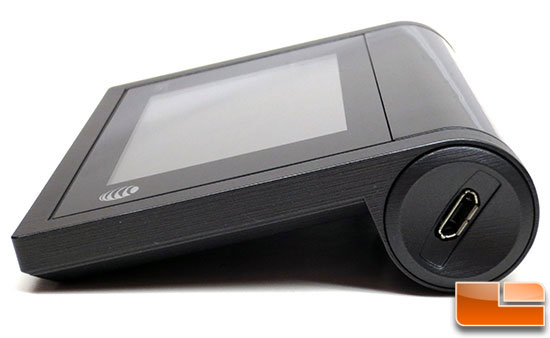
Spinning the Liberate around 180-degrees you can see that the right side of the cylinder has a micro-USB port for charging. The Liberate comes with a USB charging cable and a power adapter for the wall.
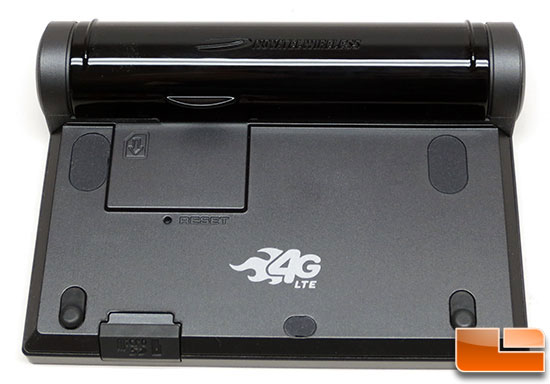
On the back of the Liberate you’ll find the battery access cover, a reset pinhole and along the bottom edge you’ll see the flap for the microSD slot. Yes, the Liberate can store data for easy sharing, which is awesome. AT&T says that the Liberate will accommodate cards up to 32GB in capacity.

With the battery covered prided off you can see the 2,900mAh lithium-ion battery that gives the Liberate enough juice for a claimed 11 hours of continuous use.
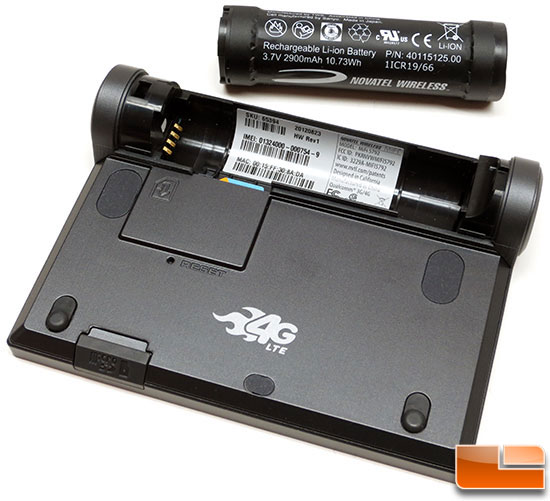
If 11 hours of battery life is not enough, you can always purchase an additional battery and simply swap it since the battery full removable with no tools needed.
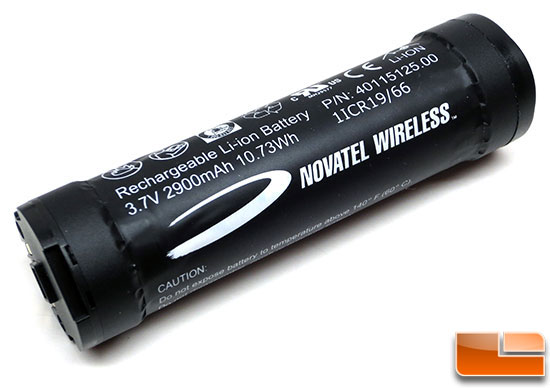
The battery on the used on the AT&T MiFi Liberate mobile spot is branded Novatel Wireless and has part number 40115125.00. This is a 3.7V rechargeable Li-ion battery that is rated at 2900mAh or 10.73Wh.
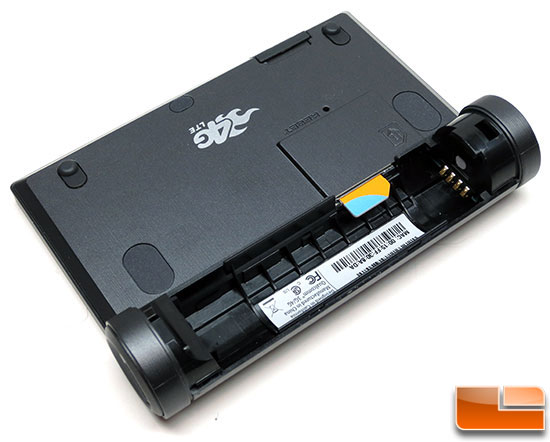
The AT&T MiFi Liberate uses a standard SIM card that can be easily accessed from the battery compartment if you ever need to switch it.
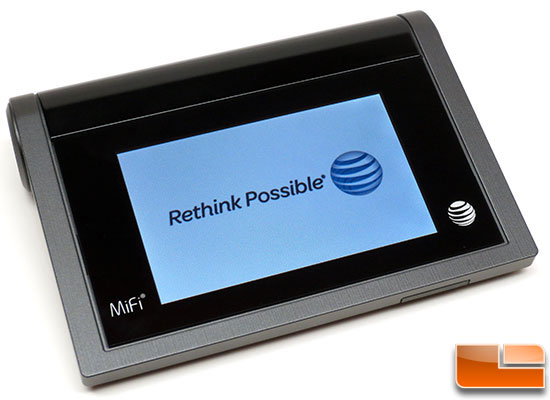
Here is a shot of the 2.8-inch color TFT touchscreen in action with the Liberate booting up for the first time. The display operates at 400 x 240 (WQVGA) screen resolution, so don’t expect HD quality graphics with this hotspot. The capacitive panel has decent responsiveness and the viewing angle isn’t anything to write home about. Once you setup the MiFi hotspot you don’t really need to use the screen often, so the screen quality shouldn’t be a big deal.
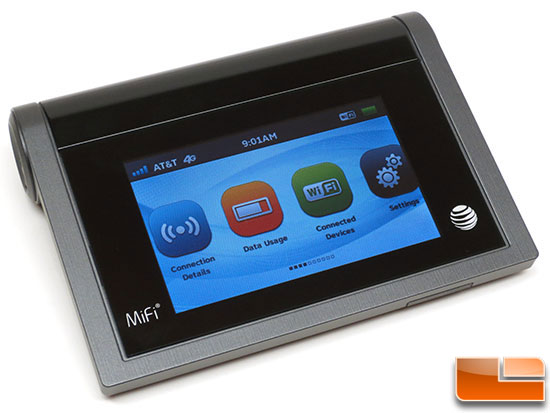
The Graphical User Interface (GUI) is nicely laid out and the differently colored icons make finding what you are looking for easy. We were shocked to see that the Liberate has an accelerometer and rotates the display as you turn the device.

The AT&T Liberate hotspot was ready to go as soon as we turned it on, so the setup it pretty much already done for you! The first icon on the GUI is ‘Connection Details’ and if you click that icon it will show you the Wi-Fi network name and the password for the Liberate. All you need to do is enter in the password on the device that you are connecting to the Liberate and you should be online! It literally takes just a few seconds to do and is super simple. You can change the default password by visiting http://att.mifiliberate/ on a connected device and gain access to all the advanced settings. It should be noted that the Liberate can host up to 10 Wi-Fi enabled devices! The default admin password for the online browser is ‘attadmin’ on the AT&T Mifi Liberate in case you are curious.

Speaking of settings here is a look at the settings menu on the Liberate. Here you can disable cellular data and enable things like airplane mode and international roaming. You can also adjust screen timeout and screen brightness; enable sound alerts; and more importantly change its WiFi range. If you are trying to save power you can set it to ‘low’ to get the longest possible battery life out of the Liberate hotspot.

By default the AT&T Liberate 4G LTE hotspot comes with Wi-Fi Protected Setup (WPS) disapled, but you can enable it under the WPS menu. When it coms to security the Liberate supports VPN pass-through, WiFi Protected Setup, NAT Firewall, anti-CSRF, session timeout, block retry attempts and admin password hash.

The Liberate supports both GPS and DLNA functionality. The GPS is handy for tagging your location (Facebook, Instragram) or just want to tinker around with the online map. Most people have GPS already on their smartphones, but it doesn’t hurt to have it on a hotspot. The DLNA functionality will likely get more use by users as it allows you to stream media wirelessly to your DLNA audio devices with ease. The only caveot here is that you need to use a web browser as the Liberate does not have a speaker. For example you should be able to stream music from the microSD card on the Liberate to a Smart TV thaa supports DLNA with ease.
That pretty much covers all the main points we wanted to highlight on the Liberate, so we’ll move on to trying out the Liberate on the AT&T 4G LTE network in three difference states on the next page.

Comments are closed.